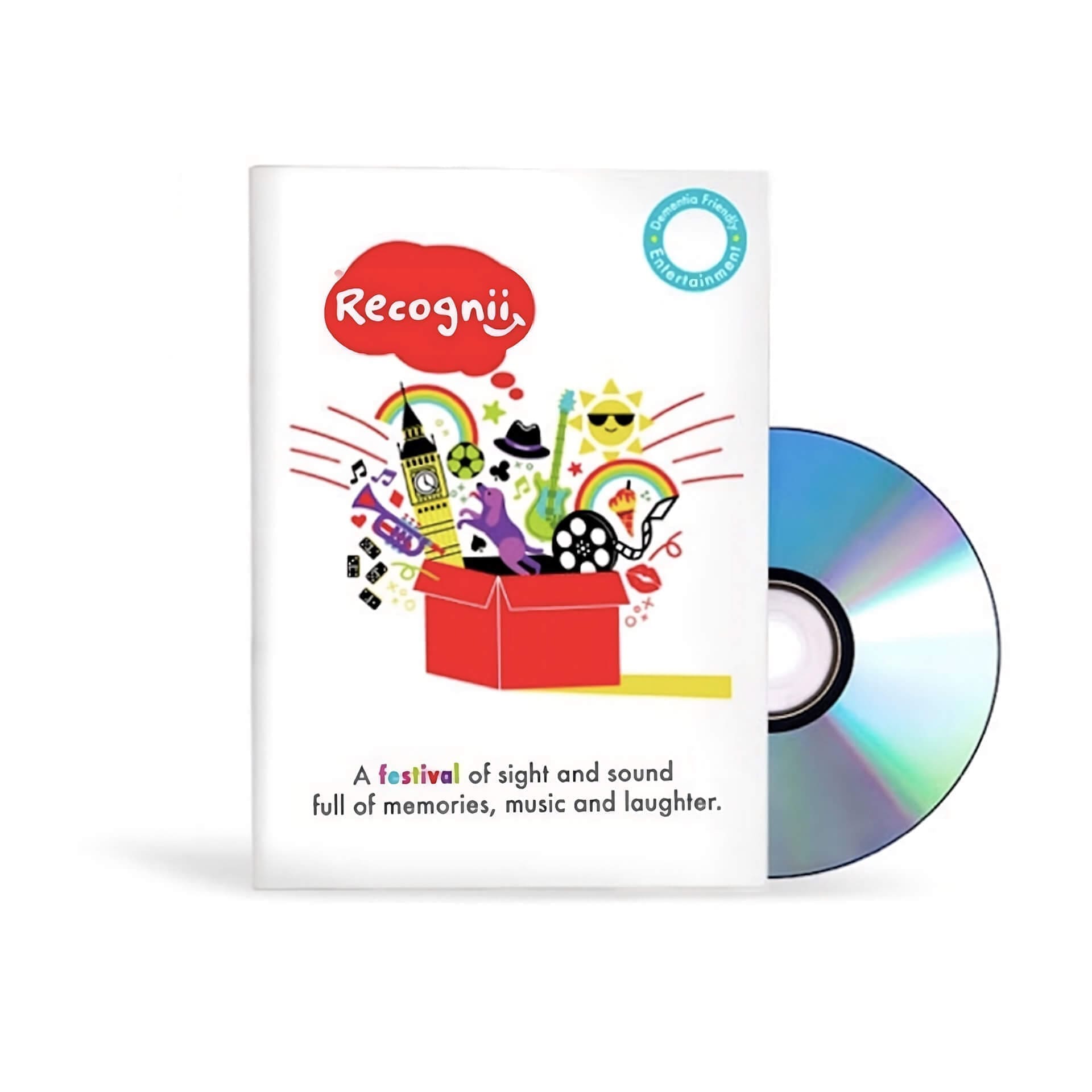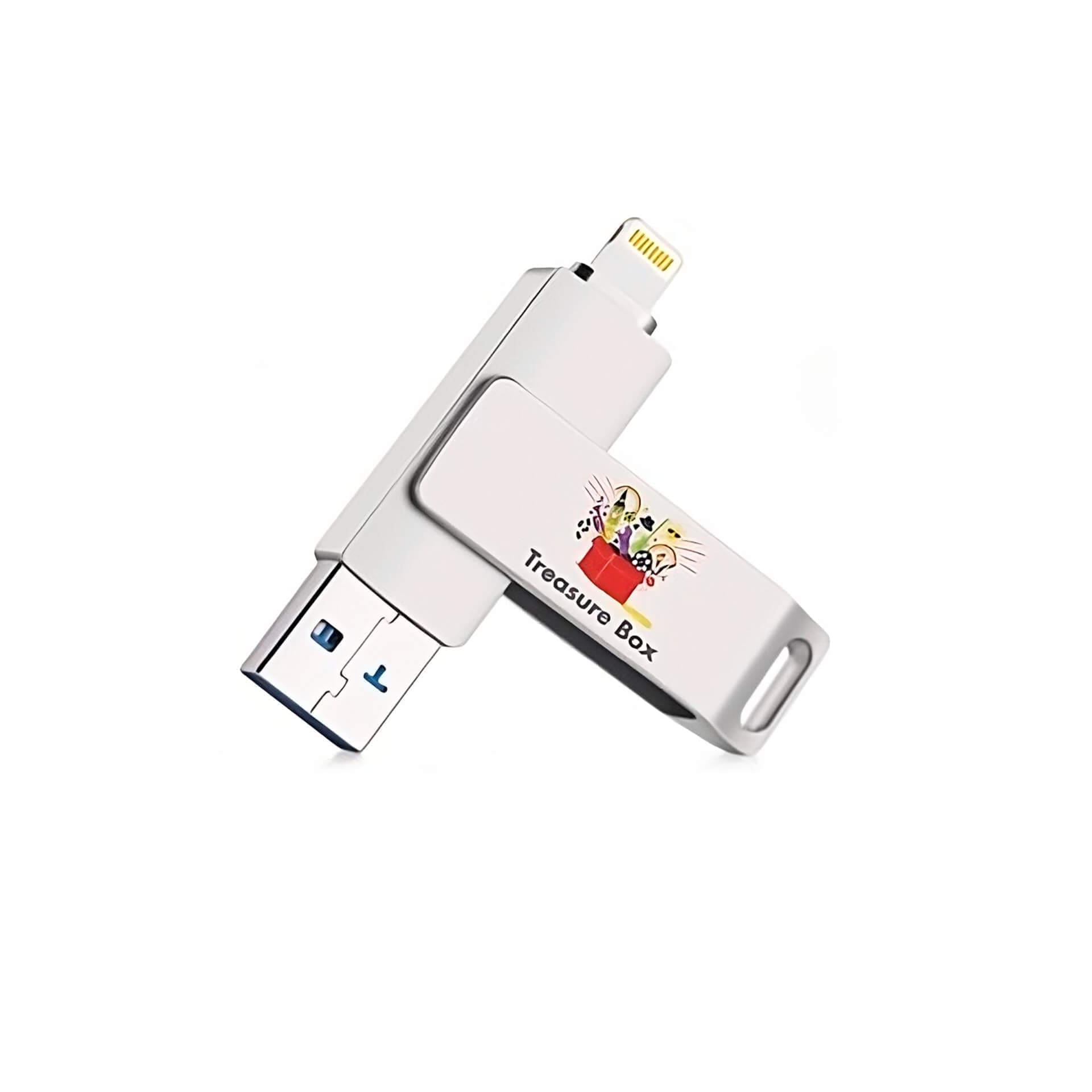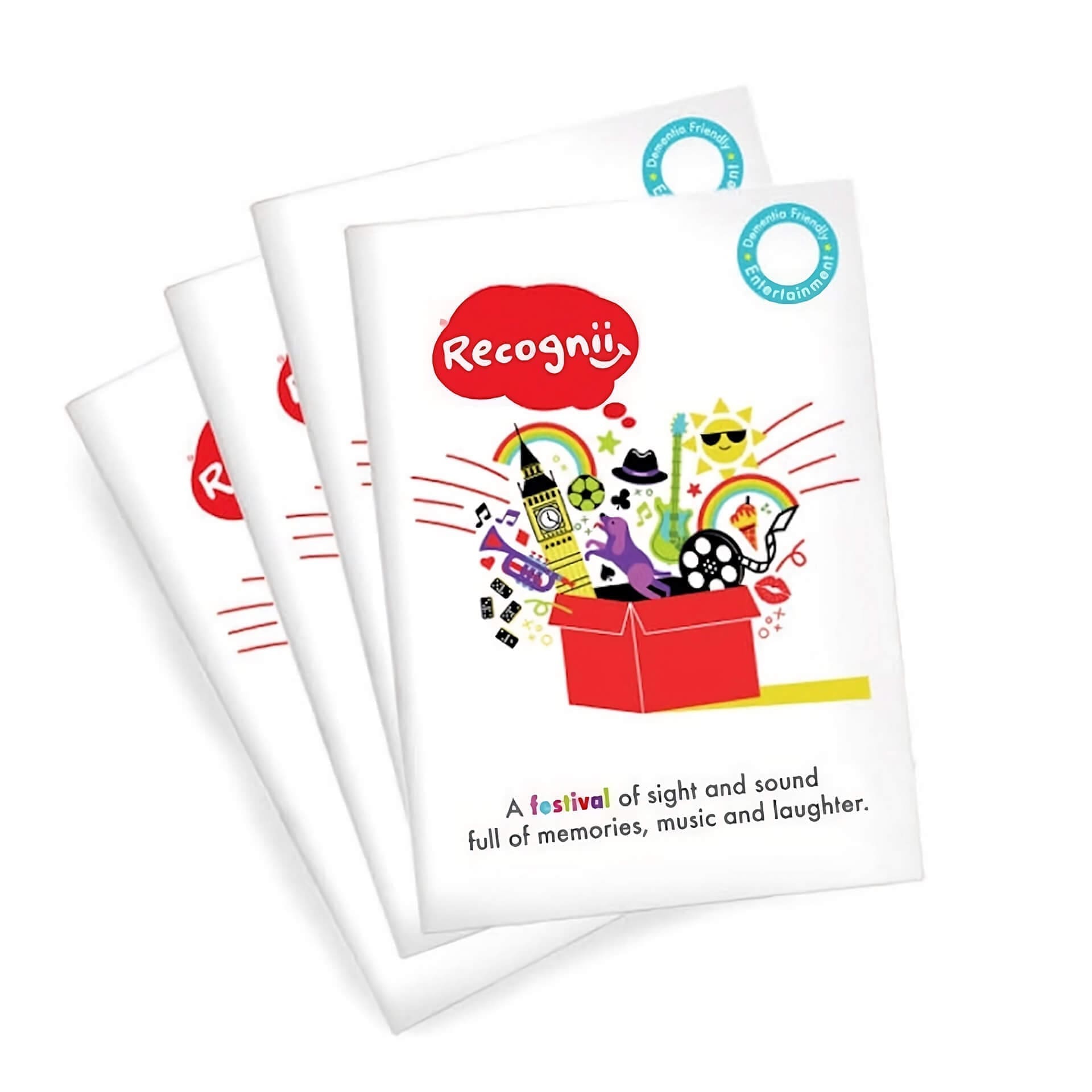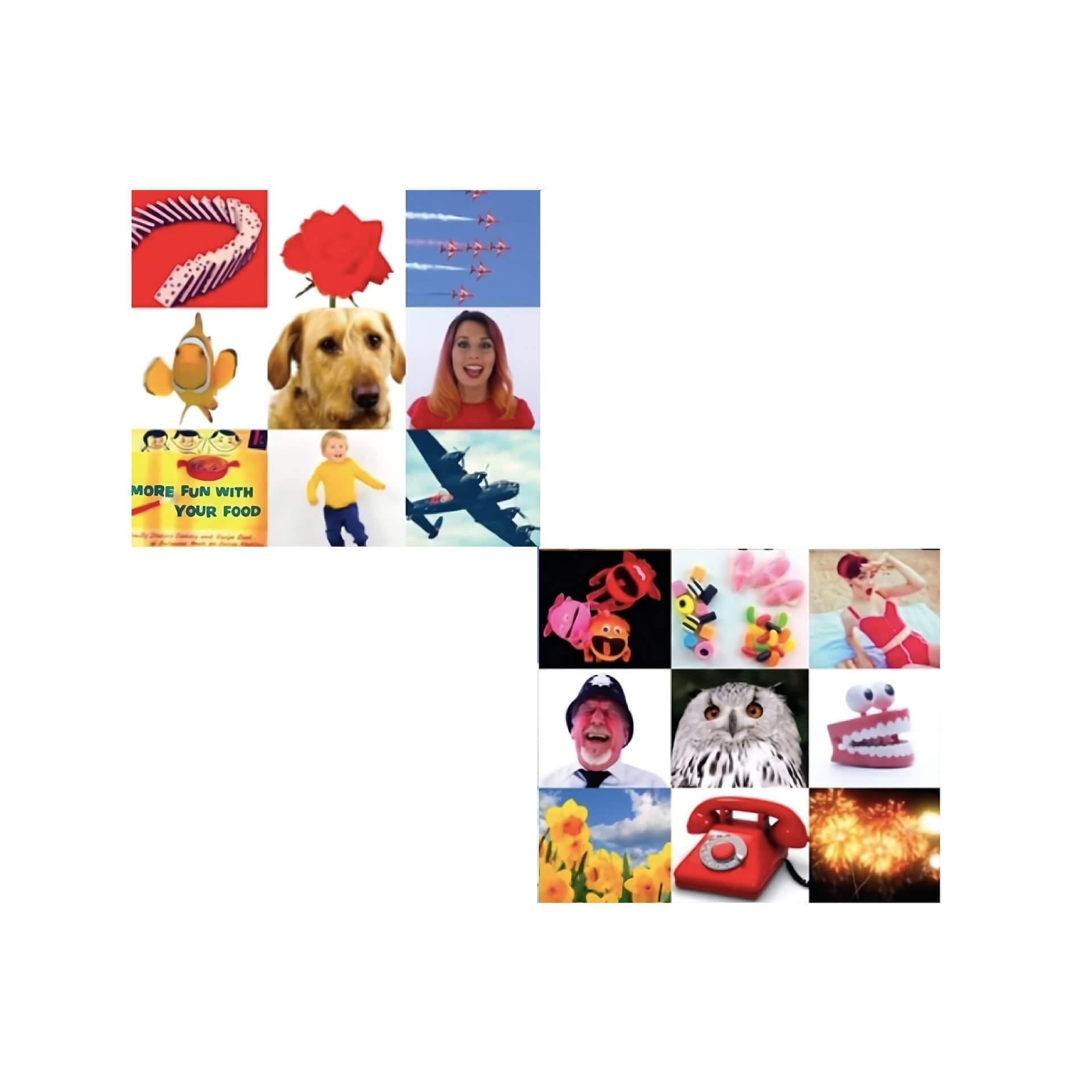Recognii Treasure Box
Price range: £16.66 through £19.99
Treasure Box by Recognii is visual entertainment created to bring joyful recognition to people living with later stage Alzheimer’s Disease or dementia. It is a carefully constructed blend of fun, uplifting and visually engaging plot-free clips, all set to some of the nation’s best-loved music and songs.
From gentle humour, happy children and appealing animals to musical interaction, nostalgia, the natural world and much more, each highly visible short scene taps into the emotional memory and can be enjoyed again and again by anyone living with dementia or memory loss.
Based on research by dementia experts, Recognii taps into parts of the emotional memory that can remain intact. It can be enjoyed again and again by anyone living with dementia or memory loss.
Key benefits:
- Over an hour of gentle viewing fun
- Regularly changing scenes to engage
- No dialogue or complex storylines
- Well-known music and song soundtrack
- High contrast visuals for easier recognition
- Designed for short attention spans
- Fun sound effects
- Includes 4 BONUS features
Bonus Features
In addition to the hour-long film, Treasure Box also includes a series of four bonus features with a variety of applications for viewers and carers:
Interactive Singalong
Well-known songs from the DVD together in a special feature ideal for group singsongs or karaoke sessions! Easy to read lyrics provide visual prompts while the simple musical arrangements and friendly female vocals encourage viewer participation.
Multisensory Soothe Booth
Multi-sensory stimulation can be helpful in reducing agitation, restlessness and anxiety and promoting relaxation. Our multi-sensory booth contains soothing and evocative sights and sounds taken from the natural world and British heritage including soft waves on a beach, summer birdsong, crunching autumn leaves and a steam train chugging along the tracks.
Children and Animal Favourites
Many with later stage dementia take joy and comfort from smiling children and appealing animals. This segment is a specially edited collection of all the children and animals from the DVD, set to uplifting, toe-tapping music.
Stars of the Silver Screen
Memories from childhood and early adulthood can be easier to recall. This is a chance for viewers to reminisce about stars of yesteryear and see how many they can remember. Iconic black and white photographs of famous faces from the 40s, 50s and 60s set to a stirring cinematic soundtrack.
The Concept
Recognii is a specially formulated entertainment DVD aimed at people with moderate to advanced stage Alzheimer’s Disease and other types of dementia, and specifically those who are no longer able to follow or enjoy regular TV programming or have trouble with concentration.
It is designed to bring safe, engaging and gentle ‘in the moment’ entertainment to people living with dementia and respite to their care givers.
The DVD is ‘plot-free’ and features an hour-long series of short clips set to upbeat music, well-known songs, and fun, surprising sound effects. Each clip has been designed to be highly visually engaging, provoke laughter, spark gentle recognition or encourage musical interaction. It seeks purely to entertain rather than improve or maintain cognitive function.
Content
Recognii features a mixture of moving and still photographic clips typically comprising children, animals, nature, abstract patterns and shapes, iconic scenes, people and places, gentle comedy, puppet sketches, interactive singalong segments, nostalgia and other content appropriate to the age profile, life experiences and interests of the viewer. The soundtrack comprises well-loved, familiar songs, classical music and toe-tapping tunes.
Visual Adaption
The content has been specially created to accommodate the very specific visual and hearing perception problems experienced by many with dementia. These can include blurred vision, the loss of peripheral vision, problems with depth and 3D perception, reduced sensitivity to colour contrast and saturation, visual hallucinations/disturbance and others.
Designed for short attention spans
People living with significant dementia may often suffer from apathy (defined as the inability to proactively seek self-engagement) as well as difficulty maintaining concentration and focus. Each Recognii clip is designed to contrast strongly from the last, both in terms of content, visual style, colour and tempo, in order to ‘surprise’ short attention spans back to the screen. Deliberately slow transitions signal the beginning and end of each clip, allowing for sensory readjustment.
FAQs
How do I know if my loved one will enjoy Recognii?
Treasure Box is based on the sort of gentle and non-threatening content our research suggests has universal appeal among dementia sufferers. It’s the perfect gift for all those who love to see happy children, appealing animals, the natural world, puppets, nostalgia and humour – all set to the nation’s best-loved songs and music. Each scene has been designed to contrast strongly from the last so that even the shortest attention spans are drawn repeatedly back to the screen.
We know that music and positive experiences from earlier life are stored in our ‘emotional memory’, which can often remain intact for longer. If your loved one has retained their sense of fun and still enjoys music and the simple pleasures that come from interaction with children, animals and the natural world, they should find a lot to love in Recognii.
My loved one is not aware they have dementia or gets distressed when we talk about it. Is this still an appropriate gift for them?
We know the subject of dementia can be sensitive for some and that there will be those who prefer to lead their lives without labels. Recognii’s Treasure Box DVD contains no references to dementia, either in the opening titles or during the film, allowing viewers and carers alike to simply relax and enjoy the show.
The DVD packaging does contain a small ‘dementia-friendly’ stamp on the front cover and references to the condition within the text on the reverse. In our experience these are rarely noticed by viewers with mid to later stage dementia but if your loved one still enjoys reading and you have any concerns then you may wish to keep the external packaging out of sight. You can view the DVD cover by using the zoom function on the Buy Now section of our website.
How has Recognii been adapted visually?
It is estimated that up to 60% of people with dementia will experience problems with visual processing. We have taken care to make sure all Recognii content is as highly recognisable and easy to see as possible. This means predominant use of red and the primary colours we know are most visible, no busy backgrounds or distracting patterns and use of strong colour and tonal contrast. In keeping with this unique visual approach, sounds don’t overlap, music and vocal arrangements are simple, and dialogue is kept to a minimum.
When is the right time to use the Recognii DVD?
There is no right or wrong time but if you notice your loved one is struggling to follow the storylines or dialogue in their usual television programmes, or their attention regularly drifts from the screen, it may be a good time to try it.
How often can they watch it?
There’s no limit to the number of times Recognii can be enjoyed. The latest scientific research suggests that repeated activity can help form new memories for people with dementia, so viewers may get more out of Recognii each time they watch it. The DVD has a function that allows the main feature to be played on a loop.
What is the best time of day to watch it?
Apathy can be a common problem among people with later-stage dementia and energy and engagement levels can fluctuate significantly throughout the day and week by week. Experiment with putting it on at different times of the day, and if on occasion they don’t engage with it as much as usual wait a few days and try again.



